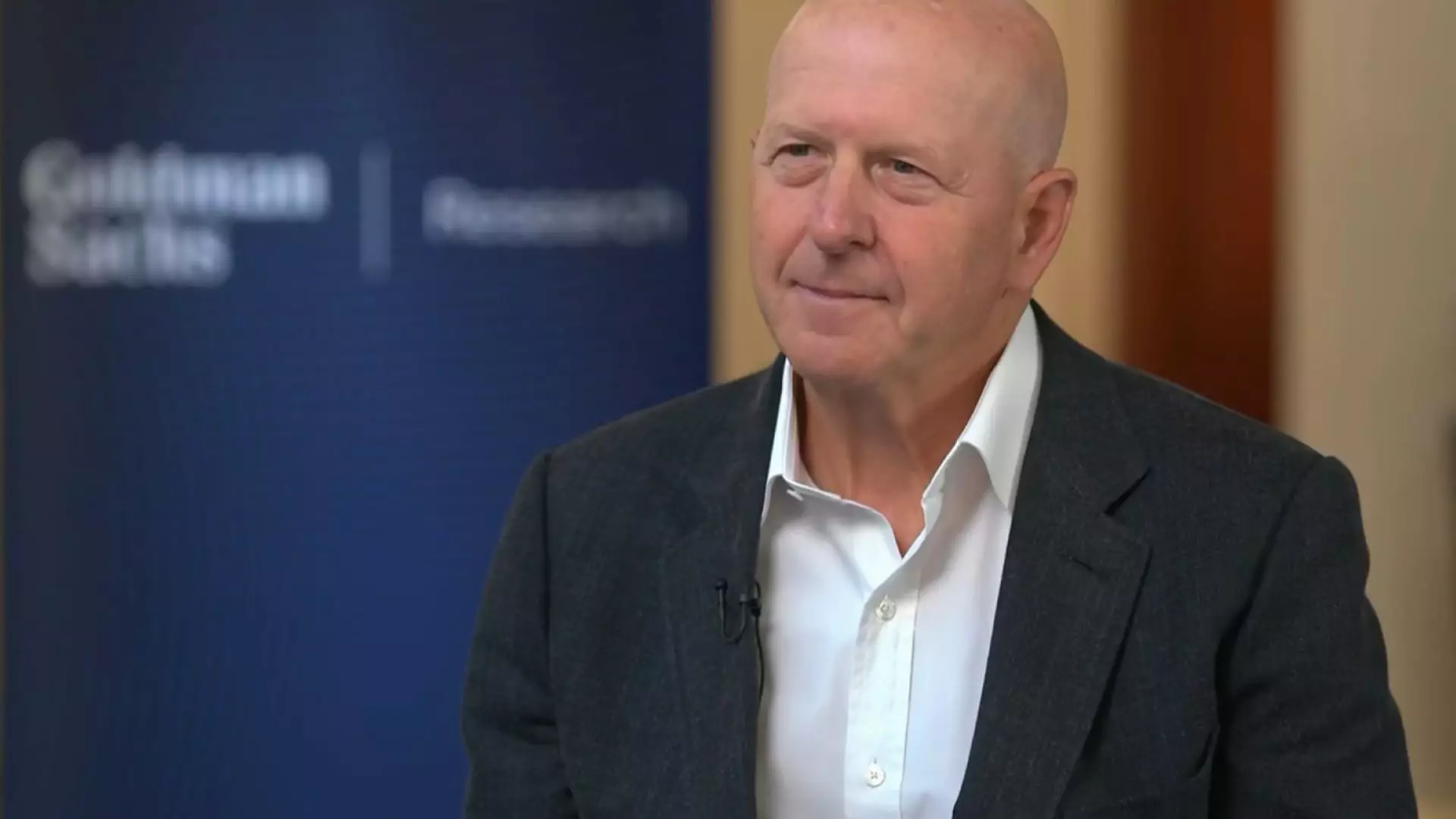Goldman Sachs recently reported its Q1 earnings, revealing a tantalizing glimpse into a company that thrives in uncertainty. With earnings hitting $14.12 per share—far surpassing the anticipated $12.35—one could argue the investment banking titan is capitalizing on turbulent times. The impressive $4.74 billion profit represents a 15% increase from the previous year, signaling an ability to navigate market whims. Yet, beneath the surface, the results paint a more complicated picture for astute investors seeking stability in a volatile economic landscape.
Chief among the highlights is Goldman’s equities trading revenue, which saw a staggering 27% rise, amounting to $4.19 billion. Analysts were caught off guard, as this figure surpassed projections by roughly $540 million, a not insignificant margin. Why do such figures draw concern rather than celebration? Because a robust trading division can mask deeper issues elsewhere within the firm’s operations.
The Dichotomy of Revenue Sources
Goldman’s growth is marred by declines in crucial areas such as asset and wealth management, which fell by 3% to $3.68 billion—just shy of analyst expectations. This revenue dip stems from “significantly lower” profits from investments, including private equity and public stocks. A firm that once prided itself on holistic financial services now finds itself exposed. If they can’t effectively manage their own assets during turbulent times, what does that say about their capabilities for clients with significant capital at risk?
Moreover, the fixed income division only managed a 2% increase, falling short of the estimated $4.56 billion. Similarly, investment banking fees plummeted by 8%, raising questions about the bank’s ability to attract lucrative advisory engagements. While rapid growth in equities trading is impressive, a diversified revenue stream is crucial for long-term sustainability—and that diversification is seemingly eroding.
Profit Amidst Political Chaos
Goldman Sachs CEO David Solomon’s comments on political upheaval underscore the precarious situation that banks face in an increasingly unpredictable economic climate. With President Trump’s trade escalations dominating headlines, Solomon implied that the bank’s operational environment is shifting profoundly. How can an institution thrive when its very foundation is built upon policies that can flip on a dime based on political whim? Investors should view these circumstances with skepticism.
Additionally, it’s worth noting that the bank’s shares plummeted 14% in the year preceding this report. While a more than 3% increase in premarket trading might suggest good news, it mustn’t distract from the underlying trends of instability. Goldman may ride high on trading success today, but the consequences of market volatility could bite back just as fiercely—an investment environment that results in quick profits can also result in quick losses.
Learning from Rivals: An Industry Perspective
The broader financial sector, too, is experiencing similar swings. Rivals JPMorgan Chase and Morgan Stanley reported staggering increases in equities trading revenue of 48% and 45%, respectively, during the same period. Clearly, the increased volatility has allowed savvy banks to exploit market dynamics, yet Goldman stands out because it isn’t enjoying a universal uplink across all its segments.
As Solomon faces analysts with the daunting task of addressing clients’ concerns in this tumultuous environment, one must wonder if the focus on trading will come at the expense of long-standing client relationships built on comprehensive investment strategies. The firm is quickly becoming characterized by its ability to capitalize on short-term gains rather than cultivate trustworthy partnerships.
What lies ahead for Goldman Sachs is shrouded in uncertainty, and investors should perk up. While impressive trading figures dominate headlines, they also signal a possible over-reliance on market whims rather than substantial firm performance. As competitors find ways to grow across divisions, Goldman’s drops in key areas highlight significant risks. It’s a brutal reminder that in the fast-paced world of finance, the ability to adapt is just as vital as the ability to perform.

